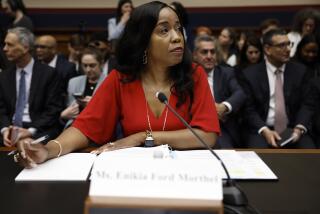Our Unmanageable Government : City, County Should Split Big and Neighborhood Functions
The recent change of boundaries for Los Angeles City Council districts has exposed a problem that is much larger than the current issue of minority representation. The problem is that so-called local government has become so big and unwieldy that nobody in the city has much say in local affairs.
There is no way for any particular area to control any outcome at City Hall, even when the issue at stake affects only that neighborhood. In fact, the more local the problem, the less likely it will receive the attention that it needs. The neighborhood with the problem will have to wait until neighborhoods in a majority of council districts develop similar problems. Only then will the big machine decide that action needs to be taken, and the resulting broad action is likely to create many new problems elsewhere.
Beyond the city’s boundaries the problem gets much worse. There are more than 1 million people in Los Angeles County who live in unincorporated areas that have absolutely no local government. So while we look for ways to get another Latino on the Los Angeles City Council, all of the unincorporated portions of East Los Angeles are without any local representation whatsoever. The same is true of Altadena, Malibu, Diamond Bar, Calabasas, Marina del Rey and other growing areas that need local attention.
Residents in those areas have their smallest local decisions made by the five-member County Board of Supervisors--the same board that is supposed to be the big government for the big problems that affect the destiny of the entire region. And with each supervisor representing nearly 2 million people, no minority groups have any influence on the decisions that must be made at this highest level.
Many of the problems in Los Angeles are unmanageable precisely because our system of government is unmanageable. We never see the big picture because the county government is bogged down in providing local services to the unincorporated areas. Some people look to the City of Los Angeles for the big picture, but it is only one of 84 cities in the county and it contains less than half the county’s residents.
This system of big government is kept out of balance by having one gigantic city operating on the same level as its 83 much smaller neighbors. Additional confusion is caused by the countless overlapping special districts that attempt to deal with critical services such as sewage, garbage, water, education, etc. For example, now that the Hyperion sewage treatment plant near El Segundo clearly needs upgrading, to whom do we turn? The City of Los Angeles, the county or Sanitation District No. 4? No wonder Angelenos so often turn to Sacramento for help.
The essential point is that local government and big government are two entirely separate functions and should be two entirely separate levels of government in order for representative democracy to work at either level. The county government cannot be big and local at the same time, and neither can the government of the enormous City of Los Angeles.
The big government functions of the City and County of Los Angeles should be merged into one big government, and the local government functions of both governments should be spun off so that the region becomes a collection of about 100 local governments that would address local issues on the same level as they arise.
When the new City of West Hollywood was incorporated in 1984, it unleashed a surge of local energy devoted to improving the local quality of life. Dozens of civic leaders now volunteer their time and expertise to design services and facilities that are much more closely tailored to local needs than when such decisions were made by remote officials.
Imagine what this would mean for the more than 2 million people who live in the San Fernando Valley section of Los Angeles. Their only government is on the far side of a mountain range, way out of reach and frequently out of touch. Instead of taxing this vast area to employ distant experts to guess what is best for each local area, why not simply establish local governments so that the people can make those decisions for themselves?
To the degree that San Fernando Valley residents have problems in common with the people in West Los Angeles or in South-Central Los Angeles, they have even more in common with their neighboring cities in the valley. The same is true for residents of the Westside and the South-Central districts. Whatever benefits exist in the association of such disparate areas within the city, they would be better utilized if applied countywide. We could then use our pooled resources to employ experts to guess what is best for the metropolis as a whole.
We can all take great pride in Los Angeles’ remarkable achievements during the past 200 years, but it is time to make substantial changes in the way we provide big and local government if we are to cope with the challenges of the next 200 years.
More to Read
Start your day right
Sign up for Essential California for news, features and recommendations from the L.A. Times and beyond in your inbox six days a week.
You may occasionally receive promotional content from the Los Angeles Times.






